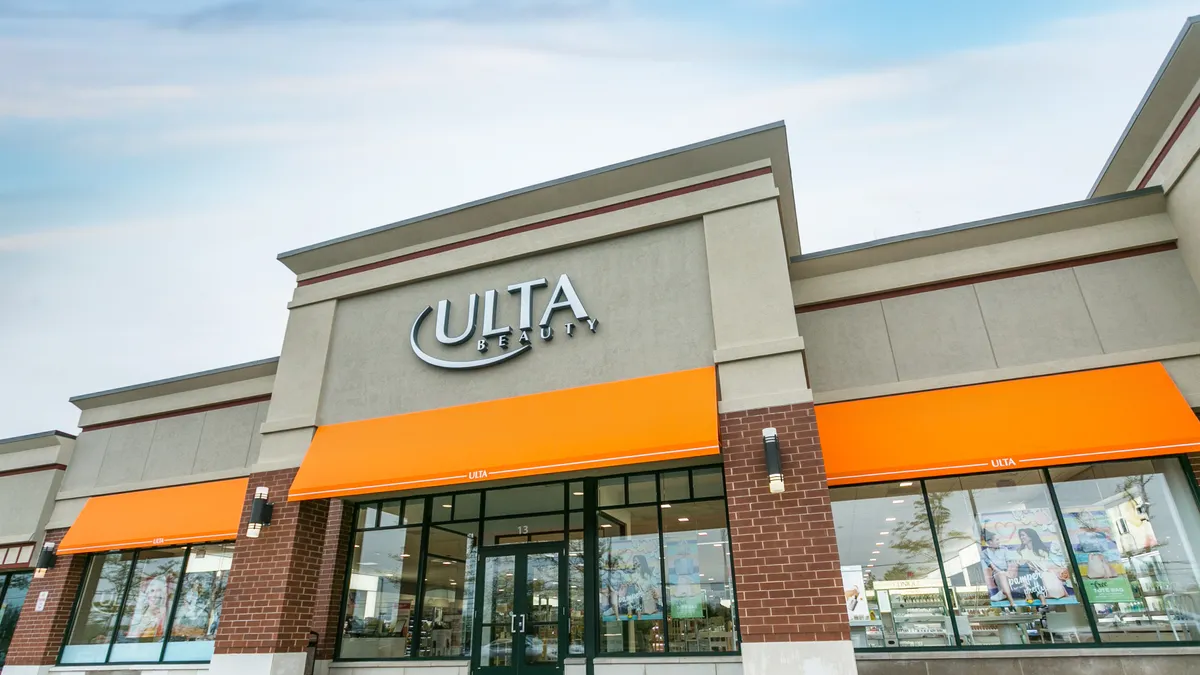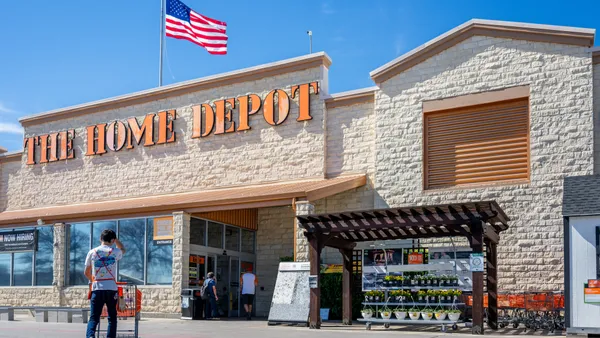Dive Brief:
- Ulta’s second quarter was brighter than most of retail, with the retailer’s net sales growing 16.8% to $2.3 billion, as comps surged 14.4%.
- Operating and net income both grew by nearly 18% and gross profit was also up by double digits, according to a company press release.
- Bucking the trend, Ulta raised its outlook for the year and expects sales of up to $9.75 billion for the year and comps as high as 10.5%.
Dive Insight:
While Mary Dillon has officially moved on from Ulta, landing as CEO of Foot Locker, her successor Dave Kimbell is having no trouble continuing the beauty retailer’s winning streak.
“We recognize beauty is not immune to macroeconomic challenges, but the category’s deep emotional connection has historically resulted in stronger resilience compared to other discretionary categories,” Kimbell said on a call with analysts Thursday, adding that the popularity of wellness and self-care has buoyed this further. “As we look to the future, we know there will be challenges, particularly with the wide-ranging impact of rising inflation, both on our business and our guests. But we remain confident in the resilience of the beauty category and our ability to lead the beauty category and drive long-term profitable growth.”
Makeup — which has had a tough couple of years, especially with the pandemic’s impact on events — grew by double digits in both the prestige and mass segments. As Ulta’s biggest category, strength in makeup is particularly significant for the retailer. But even outside of makeup, Kimbell said the retailer is seeing strength in every category and has not seen any trading down from shoppers. GlobalData Managing Director Neil Saunders said in emailed comments that the retailer could benefit from consumer unwillingness to part with “little beauty treats and indulgences” despite inflation.
“Outside of indulgences, it is also the case that many beauty and skincare routines are very much embedded into people’s lives so there is great reluctance to cut back on any of the products associated with them,” Saunders said. “All these factors are helpful to Ulta.”
Ulta is also outpacing the growth of the overall beauty market, according to Saunders, suggesting the retailer is taking market share from others in the space. Selling through Target could also be helping with that, as it makes Ulta even more convenient to shoppers. As for that deal, the retailer now has 186 Target shop-in-shops active, after opening 59 in the second quarter.
As Sephora continues to expand its deal with Kohl’s — the two retailers announced just last week that they would grow the concept to all of the department stores’ locations — that will inevitably put it in closer contact with Ulta’s stores, and its Target shop-in-shops. But Ulta may have the advantage, per Saunders.
“[W]e believe that Ulta still has the edge as the Sephora stores in Kohl’s are slightly less convenient, carry a much smaller range, and are not quite as visible as most Ulta stores with which they will compete,” Saunders said. “We also think that, despite its current problems, Target is a much better vehicle for expanding Ulta, than Kohl’s is for expanding Sephora.”















